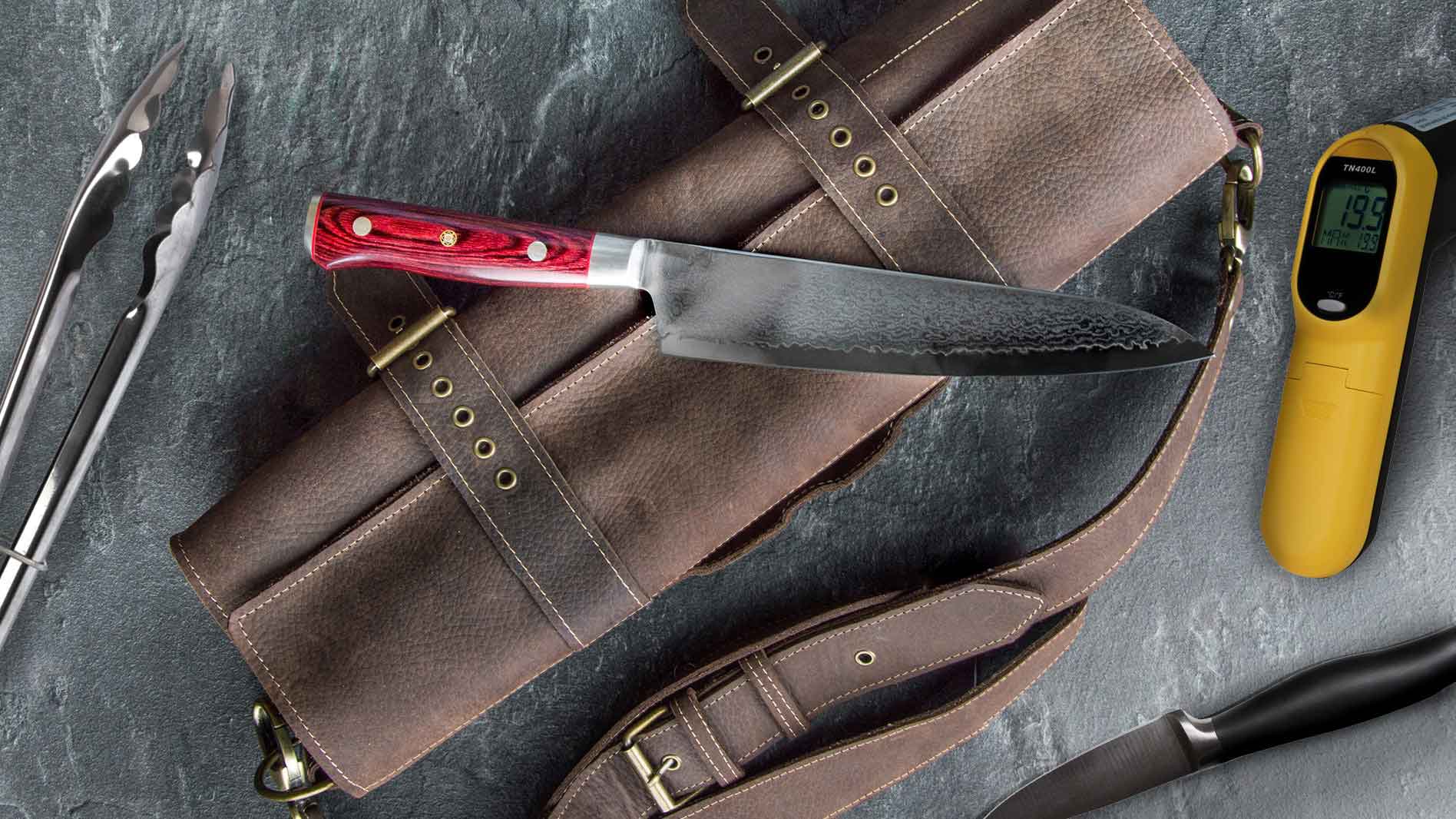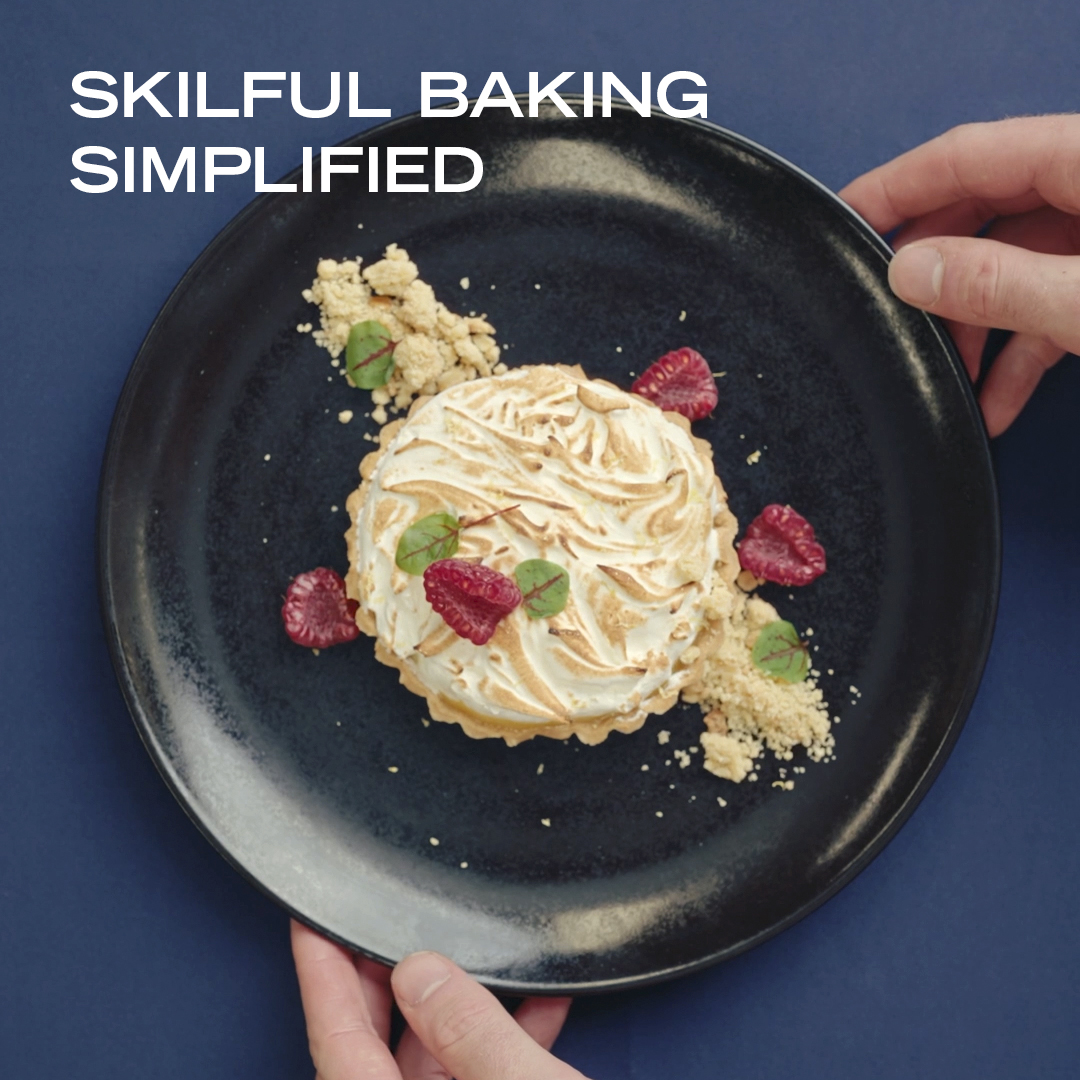Be inspired with recipes created by chefs.
Sign up for updates about products, special offers, news and promotional materials from Goodman Fielder.

Summary
Every chef is different, so are their cooking techniques and the tools they use within the kitchen. But if you were to look into a chef’s every day tool kit, we guarantee most chefs are more alike than they think.
A completed chef’s tool kit ensures success is achieved within the kitchen during every long, tiring shift. Having your trusted tools by your side during the highs and lows of prep and service, allows you to be at the top of your game at all times.
While the right tools allow you to produce quality, tasty meals daily, knowing exactly what tools are required can sometimes be overwhelming and expensive. That’s why we’ve spoken to some industry veterans and uncovered the ultimate tools you need to ace every shift.
Knives, knives and more knives:
Knives are the most important tool of the trade. They’re often referred to as a chef’s pride and joy. And while envisioning a sharp, cold piece of steel as your pride and joy might seem like a strange anomaly to the uninitiated, if you ask anyone in hospitality, they’ll tell you that messing with a colleague’s knife is one of the kitchen’s biggest faux pas’.
Chefs rarely stop at just one knife as they come in a wide range of types, styles and weights. To build out the ultimate tool kit, many chefs have a vast range of knives, from bread, paring and filleting, there is a blade for every occasion. So, here’s where each knife works best in the kitchen and why they should be a part of your overall kit.
Chef’s knife:
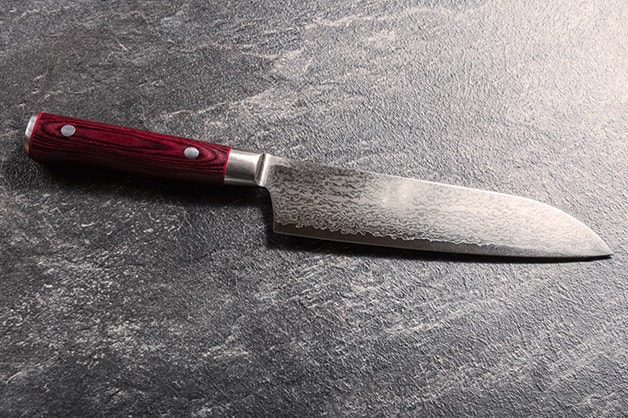
While many knives have their one sole purpose in the kitchen, the famous chef’s knife puts each task to the test, making it a real necessity for your kit. With its 8 – 12 inch blade and rounded form towards the tip, the chef’s knife is the go-to in the kitchen. According to chef Paul Rifkin, 99 per cent of tasks in the kitchen can be completed with a chef’s knife, making it one of the most useful tools available.
“It’s the tool you are going to use most of the time,” he told Goodman Fielder Food Service, adding, “after time, you learn that your knife can do it all and that there is no need to waste time and switch between.” He continued to explain that a good chef’s knife is two inches thick or high and it is sizing that makes it easy to wield around the kitchen for all your chopping, slicing or dicing.
Bread knife:
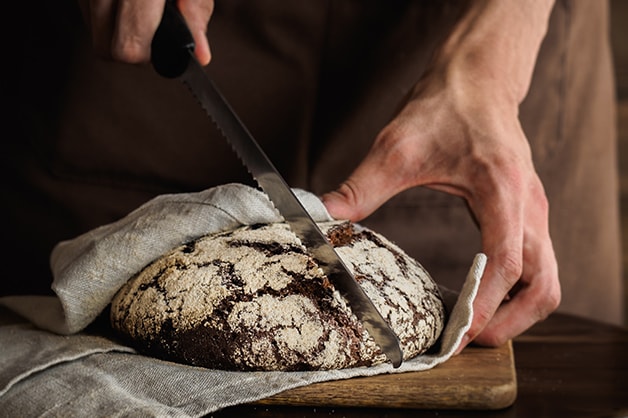
Attempting to cut bread without a serrated blade is fraught with danger. Without the serrated edges gripping the hard, crusty surface, any shift in weight can slip the blade, sending it flying down the baked outer-shell, plunging towards an arrangement of fingers and pain. We’d argue that makes the next blade a kitchen must-have.
With its serrated blade, the bread knife easily slices through all types of bread, whether it’s sourdough, baguettes, bagels or rolls. While it’s perfect for the obvious, slicing bread, you can also use this style of knife to saw through fresh pineapples and to roughly chop chocolate for baking recipes. The best thing is, due to its serrated blade, the bread knife requires next-to-no maintenance as it stays sharp constantly due to the material it is slicing through.
Fish filleting knife:
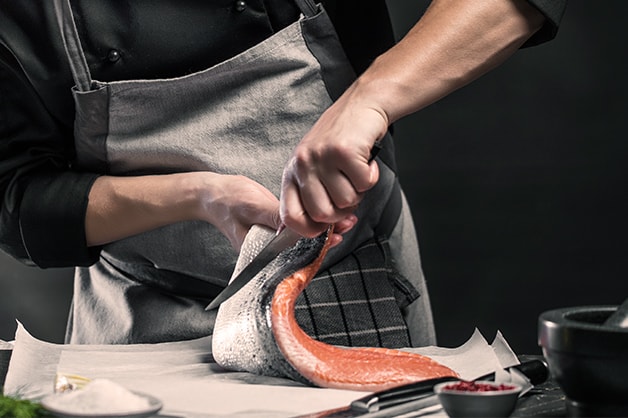
Filleting a fish can be one of the most time-consuming, delicate tasks in the kitchen. Making sure every single one of those tiny, thin bones has been removed can sometimes become overwhelming. To ensure every inch of a fish is cleared from bones, chefs are placing their trust, and patience, in their fish filleting knife.
According to Chef Paul, a fish filleting knife is the perfect tool for the task because it “has some flex inside of them and the blade isn’t wide, it’s long,” allowing it to seamlessly glide through seafood products without ripping the product apart. Though, Chef Paul advised, before using the fish filleting knife be aware of the type of bones it will be slicing, as a chef’s knife may be more appropriate to fulfil the task if the bones are thick and solid.
Everything else in-between:
Knives are the “cool” tool of the kitchen. They’re the one item that is guarded and protected by their owners every second of every day. But they aren’t the only tool that allows you to produce delicious, tasty meals. Chefs rely on a vast range of tools when sweating away in the kitchen; from the old school spatula, whisk or thermometer, each piece of equipment plays an important part. So, here’s what you need to ensure your prep goes from bench, stove and plate in appetising fashion.
Spatula:
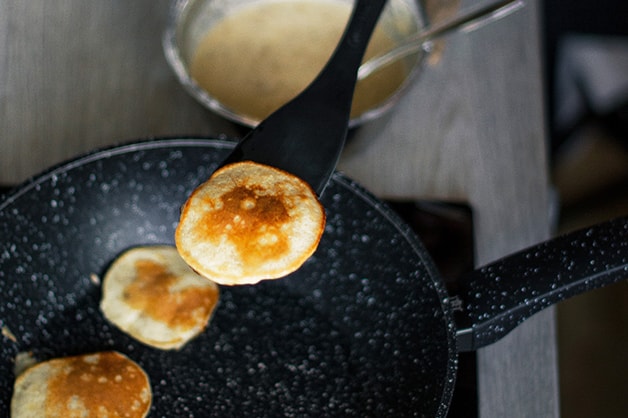
The spatula is like a chef’s Swiss Army Knife, it can be used throughout the kitchen for a variety of purposes. Perfect for stirring sauces, flipping the flawless round pancakes and scrambling fluffy, delicious eggs, the old fashion spatula is a chef’s “go to”.
Thanks to its versatility in the kitchen, it’s one of the very few utensils that can be used across prep and service, no matter if it’s breakfast, lunch, dinner or dessert. And while there are many options available on the market, a silicone model is recommended as they are great for extra heat resistance.
Peeler & Microplane:
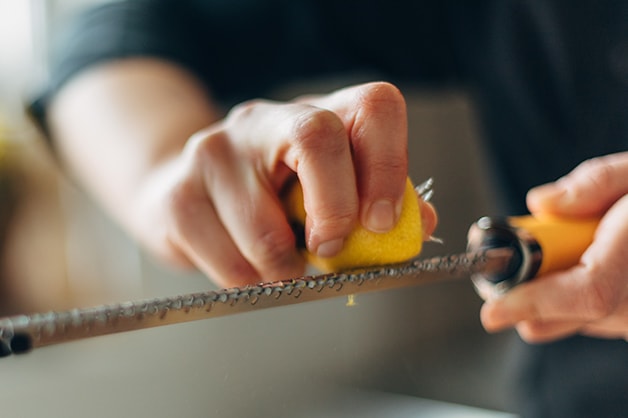
The health trend within Australia is booming, meaning more of your customers are opting for meals with fresh fruits and vegetables. As the trend continues to take over menus, the onus is on you to ensure every piece of fruit and skerrick of vegetable is being served clean and flavoursome. So, ensuring the old, crinkly, dull skin of your carrots, cucumbers, apples and pears is removed before being served to your patrons have never been more important.
That’s where your trusted peelers and mircoplanes come in handy – they’re the tools that make life in the kitchen easier and more efficient. A sharp peeler is key to reducing prep time and ensuring all your vegetables are clean and clear of any blemishes that can show up during cooking and presentation. Whereas a stainless steel, sharp microplane is the perfect tool for zesting citrus fruits, grating hard cheeses for service, even shredding chocolate for dessert décor.
Whisk:
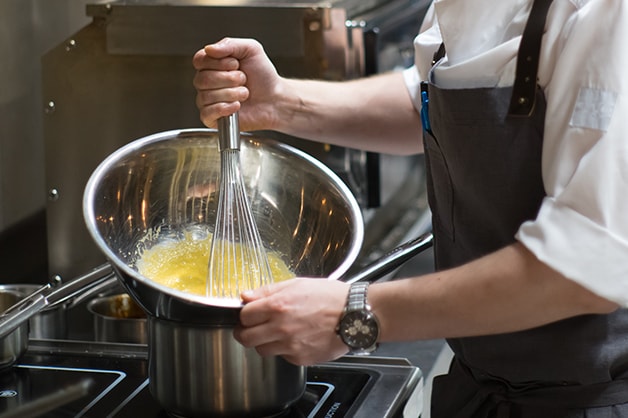
Technology has over taken so many parts of life and the kitchen is no exception. These days, there are endless options of new machines that promise to deliver the perky meringues, smooth batters and thick sauces. Despite these new tools, chefs are still opting for the old, trusted whisk to deliver nothing but remarkably blended ingredients.
Over the years, the whisk has been used throughout the kitchen for a number of purposes; from removing lumps from sauces and gravies, beating eggs and whipping cream, to mixing vinaigrettes and combining dry and wet ingredients. To ensure success is achieved every time, it is important you are aware of what style of whisk is needed for different tasks within your kitchen. Here’s why:
1. Balloon whisk
- Strengths: Whisking in bowls or saucers, keeping custards in motion, combining dry ingredients and smoothing batters.
- Weaknesses: Whipping and reaching into corners.
2. French whisk
- Strengths: Airing eggs or cream, reaching into tight corners and emulsifying sauces.
- Weaknesses: Scraping bowls or saucers, whisking thick batters and custards.
3. Ball whisk
- Strengths: Reaching into tight corners and combining dry ingredients.
- Weaknesses: Scraping bowls or saucers, mixing thick batters and custards.
4. Silicone whisk
- Strengths: Safeguarding non-stick surfaces and saucers, working with baking ingredients.
- Weaknesses: Handling heavy batters; keeping thick custards in motion.
Tongs:
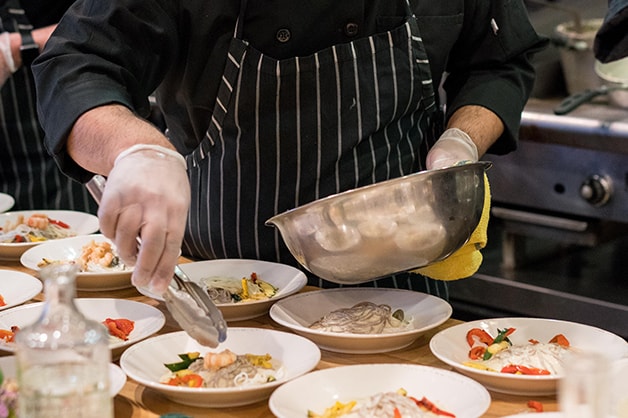
Finding a chef without burn wounds on their hands and arms is near impossible. From removing hot dishes from the oven or stovetop to handling hot foods and ingredients, each scar has a story of its own; a story every chef is proud to share. In an attempt to eliminate the number of injuries, chefs increasingly turning to the workhorse of the kitchen – their tongs.
A good set of stainless-steel tongs deliver an easier and most importantly, safer working environment. With it being one of the most versatile tools in a tool kit, the tongs are used daily to flip, toss and mix products during prep and service. Whether it is turning meat to cook evenly, mixing together salad ingredients or tossing stir fry veggies, you need to ensure a set of trusted tongs are in your kit.
Meat thermometer:
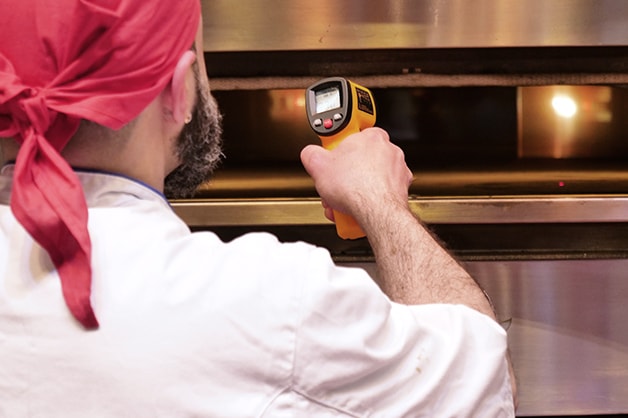
Customer’s aren’t afraid to send back dishes where their meat has been either under or overcooked. And every dish that is returned creates a sense of frustration for the chef working. So, never risk the chance of cooking underdone or overcooked meat again, thanks to your meat thermometer. This tool generally goes under the radar in the kitchen, especially with the age-old kitchen hack of measuring how well done a steak is by comparing its firmness to the padding on the palm of your hand.
However, for chefs looking to turn this art into an exact science, the meat thermometer is a great option. Because let’s be honest, there is nothing worse than dry, overcooked chicken or meat. A digital instant-read thermometer gives you a temperature reading within seconds and is simply the best way to make sure your proteins have reached the proper temperature, are cooked through perfectly and still juicy. A win-win for your customers.
Sharpening stones:
Having a range of high-quality knives to fulfil tasks in the kitchen is great but if they are blunt there is no real purpose in having them at all. Blunt knives will ruin your produce by tearing and ripping it apart due to the extra force that is needed when slicing. Along with ruining the quality of your ingredients, blunt knives also increase the risk of you losing control of the knife and injuring yourself severely.
That’s why knives need to be sharpened at the end of every shift to ensure quality control is held and injuries are prevented. The most common way to sharpen knives within the kitchen is with sharpening stones. Sharpening stones create a sharp edge on your knives, especially a chef’s knife. There is a variety of sharpening stones on the market but according to Cut Throat bladesmith, Aidan a 1000 grit stone will produce results and maintain an edge every time a knife is sharpened.
Conclusion:
They say a dog is a man’s best friend, but in the hospitality world, it’s a chef’s tool kit. Whether it is one particular knife, or a number of knives, or whether it is a spatula or a pair of tongs, every chef needs to be equipped with the right tools to ensure prep and service time are a success. So, how up-to-date is your tool kit?
Related Ideas
7 Ways to Survive Service in the Festive Season
Here are our tips, straight from the chef's mouth, on how to survive the festive season in the kitchen
